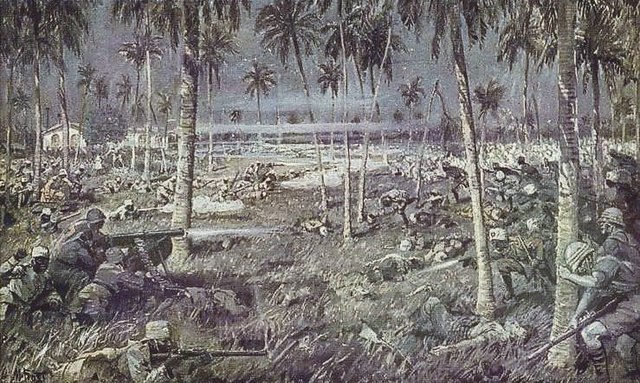The Battle of Tanga, sometimes also known as the Battle of the Bees, was the unsuccessful attack by the British Indian Expeditionary Force "B" under Major General A. E. Aitken to capture German East Africa during the First World War in concert with the invasion Force "C" near Longido on the slopes of Mount Kilimanjaro. It was the first major event of the war in Eastern Africa and saw the British defeated by a significantly smaller force of German Askaris and colonial volunteers under Lieutenant Colonel Paul von Lettow-Vorbeck.
It was the beginning of the East African Campaign of World War I, and is considered one of the greatest victories of the Schutztruppe in Africa.
The British retreat enabled the Schutztruppe to salvage modern equipment, medical supplies, tents, blankets, food and a number of Maxim machine guns which allowed them to successfully resist the allies for the rest of the war.
"Battle of Tanga, 3rd–5th November, 1914" by Martin Frost (1875–1927)
Tanga in 1914
HMS Fox (right)
Tom and Magdalene von Prince, before 1908
Indian Army during World War I
The Indian Army, also called the British Indian Army, was involved in World War I as part of the British Empire. More than one million Indian troops served overseas, of whom more than 60,000 died during the war.
Indian bicycle troops at Battle of the Somme
Indian Cavalry on the Western Front
39th Garhwal Rifles march in France
1st Gorkha Rifles charge trench near Merville, France








